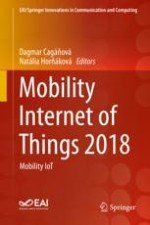2020 | OriginalPaper | Chapter
Bike Sharing: As Urban Transport Solution in a Small City
Authors : Mária Holienčinová, Zdenka Kádeková, Tomáš Holota, Ľudmila Nagyová
Published in: Mobility Internet of Things 2018
Publisher: Springer International Publishing
Activate our intelligent search to find suitable subject content or patents.
Select sections of text to find matching patents with Artificial Intelligence. powered by
Select sections of text to find additional relevant content using AI-assisted search. powered by
